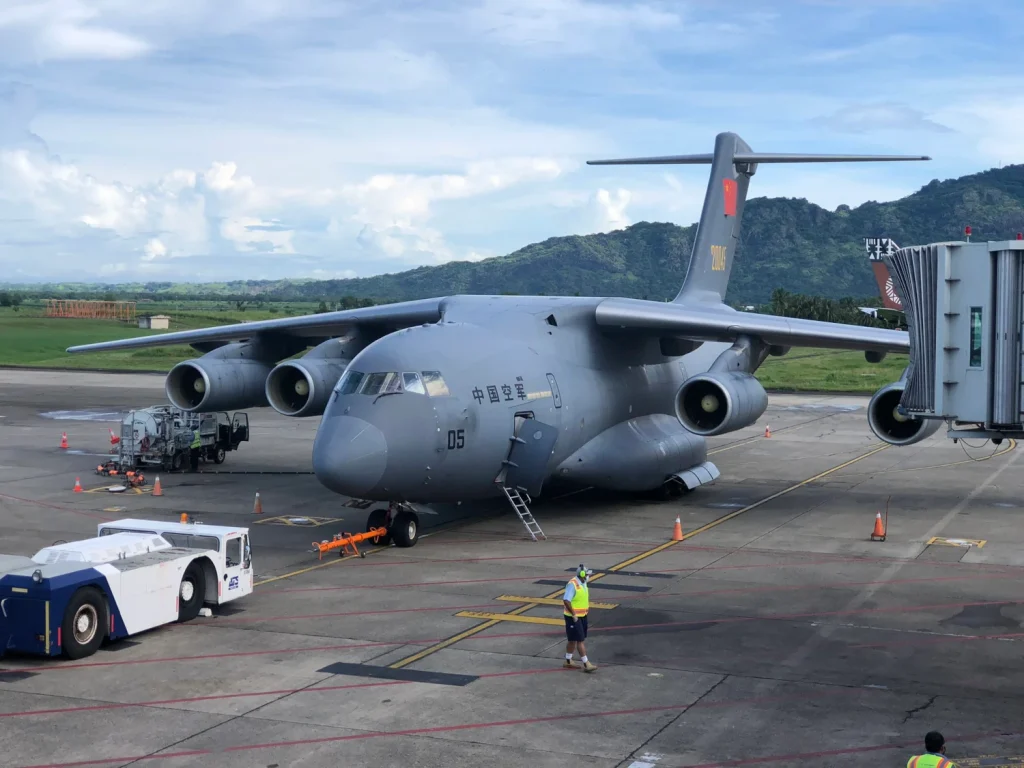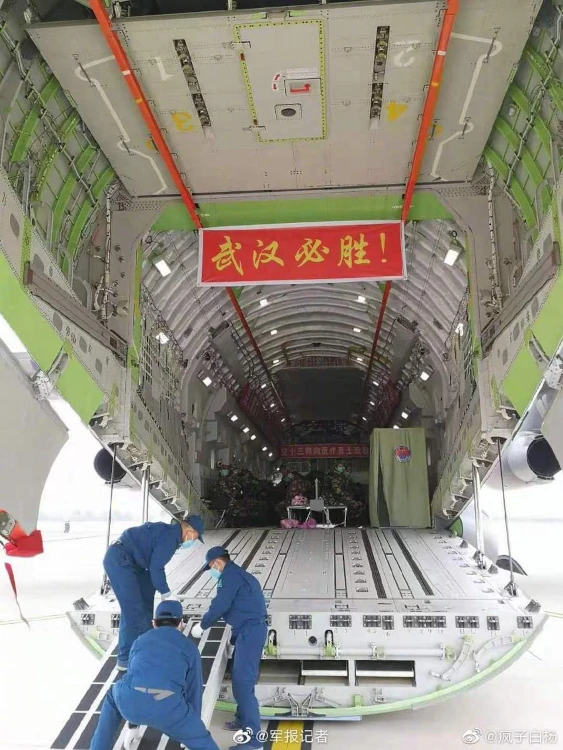Xian Yun-20, the local made Chinese Air Force transport aircraft, recently completed a feat of carrying 33 tons of relief supplies, flying nearly 20,000 kilometres back and forth.
According to Chinese CCTV news, on the 28th of January, two Chinese military planes loaded with relief materials flew across the vast waters of the Pacific Ocean, crossed the equator and reached the South Pacific, delivering a total of 33 tons of relief supplies to Tonga.

This year, this is the first time the Y-20 strategic transport aircraft has flown overseas to perform a delivery mission, and it is also the farthest distance the aircraft has travelled since the Y-20 entered service. The distance between Tonga and China is about 10,000 kilometres, and the Y-20 strategic transport aircraft flew back after it unloaded the goods. Since the circumference of the Earth’s equator is just over 40,000 kilometres, it means that this Y-20 trip is equivalent to flying half the world.
A challenging flight
For Chinese aircraft, this is a challenging flight mission. First of all, the Y-20 was not empty. The maximum load of a Y-20 strategic transport aircraft is about 66 tons. The weight of 33 tons is standard, but it will also consume more aviation fuel. This time, it had to fly to a volcanic eruption area, where a large amount of volcanic ash was floating in the air, which was also a test for the Yun-20. In addition, Tonga does not yet have the local supply facilities for the plane. The Y-20 first flew to Fiji for refuelling and then flew to Tonga. After unloading, it had to take off and return to China.
A display of confidence
This voyage shows that the PLA’s long-range strategic delivery capabilities have reached a scale. The United States uses C-5 and C-17, and Russia uses An-124 and Il-76 for such missions. Earlier, China relied on Il-76 purchased from Russia to make up for its strategic airlift capability. But this has changed since the Y-20 entered service. The Chinese Air Force has its own long-range strategic airlift platform. The PLA Air Force received about 20 Il-76 aircraft as per Russian sources.
A Chinese Engine?
During the Zhuhai Air Show last year, China claimed that it had replaced Russian-made D-30KP-2 turbofan engines on Y-20 with its WS-20 turbofan engine. This experimental WS-20 is claimed to be more powerful than the Russian D-30KP-2. A photograph, believed to be reliable, shows a Y-20 coated with primer with characteristic enlarged engine nacelles, being escorted over Xi’an Yanlian by a J-11 Flanker fighter, which is standard procedure for such a test flight.

The WS-20 is expected to provide around 31,000 pounds of thrust compared to the D-30KP-2’s 26,450 pounds. If successful, the engines may be ready for limited production starting in 2024. The aircraft version with the new engine for the People’s Liberation Army Air Force is likely to receive the designation Y-20B.
The Xian Yun-20 transport plane
Back in the early 90s, China began developing a large military air transporter. In 2006, the project of a huge aircraft was included in the state program of scientific and technological development for medium and long periods. In 2009, Hu Xiaofeng, General Manager of the AVIC Aircraft Corp, told the media that the design to build a 200-ton military aircraft has already been completed, and the process of making it will begin soon.
In 2013, the designer of the Chinese Y-20 transport aircraft Tang Changhong gave an interview to Xinhua News Agency. Tan claimed that the design of the Y-20 began five years before its first flight, which was “not much by world standards.” China started to work on heavy transport aircraft in Xian back in the 1990s. Only the last, active stage of the Chinese heavy transport construction program is likely to have a five-year history. The prototype first flew in 2013.
According to several experts, the project is based on the unrealized developments of the Ukrainian Antonov Design Bureau, which, among other things, carried out several design changes for the Chinese side (in particular, the development of the tail section, cargo ramp and wings).

The Chinese airliner first entered service in 2016 and is broadly similar to the U.S. Air Force’s C-17 Globemaster III – a four engine high-wing aircraft with a T-tail.
The Y-20A is named ‘Kunpeng’ after a giant bird in Chinese mythology is designed to be flown by three pilots. It can fly with a maximum payload is 66 tons. The fuselage length is 47 m, the wingspan is 45 m, the height is 15 m.
With a partial load, its range is 7,800 km, about the distance from Beijing to Cairo.
The Xian Y-20 can operate from various types of airfields and can short takeoff and landing. The takeoff weight of the aircraft is about 220 ton.
